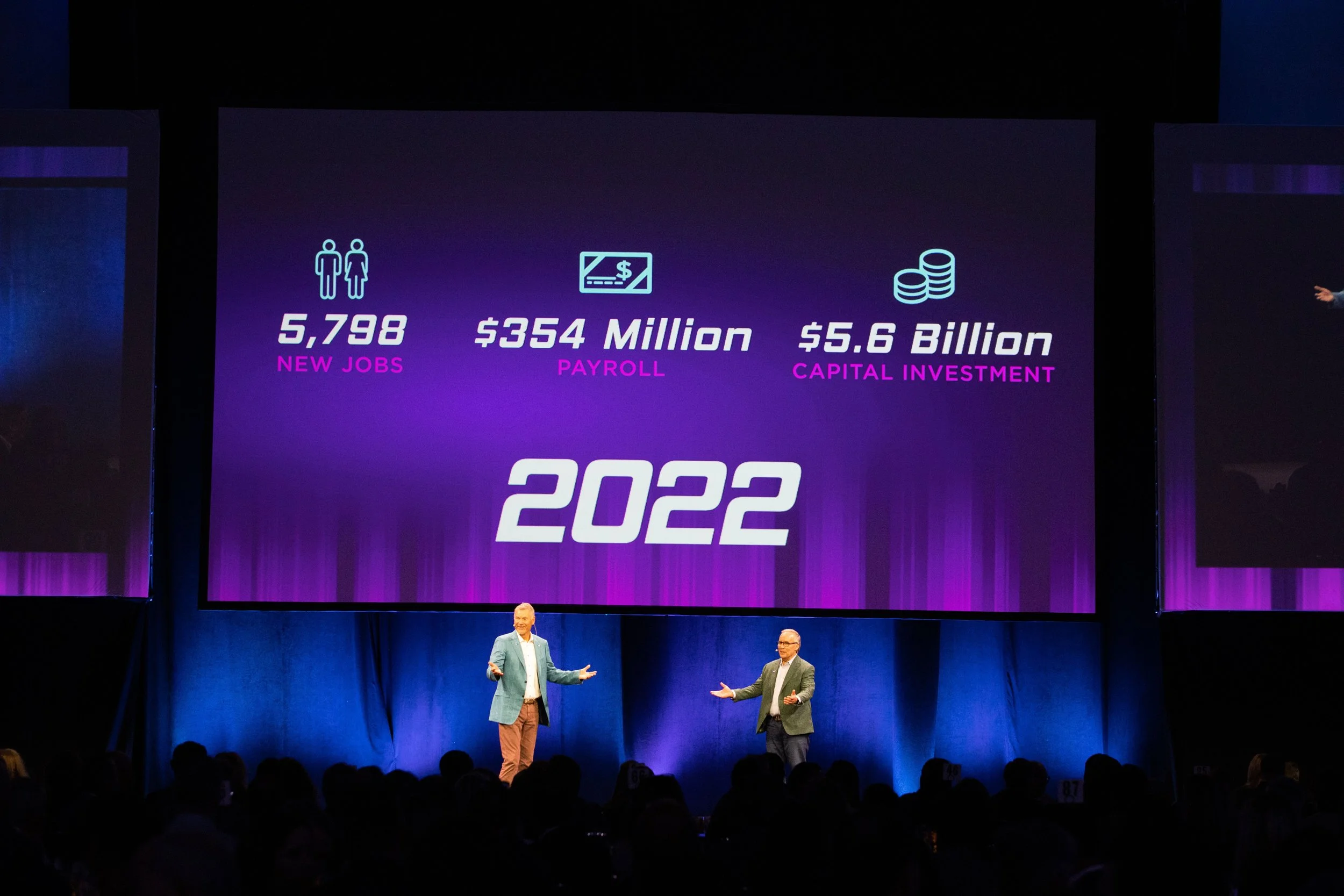FEATURE RENDERING CREDIT: BRR ARCHITECTURE
KCADC boosts Kansas City to a new level in 2022
Hunt Midwest expands, adds new office in the Crossroads
Feature photo: The 13,173-SF space located at 1881 Main St. is in addition to Hunt Midwest’s office space at SubTropolis, the world’s largest underground business park. Hunt Midwest celebrated its Crossroads office grand opening with a ribbon cutting and open house on Monday. Photo courtesy of Hunt Midwest.
Hunt Midwest locks in on largest logistics park in Missouri
All eyes focused on Kansas City CRE wins
Last week at CCIM Kansas City’s monthly meeting, Michael Berenbom, managing partner, LANE4 Property Group; Jon Copaken, principal, Copaken Brooks; John McGurk, vice president of development, Milhaus; and Ora Reynolds, president, and CEO, Hunt Midwest, joined moderator Tim Cowden, president and CEO of Kansas City Area Development Council (KCADC), for a discussion of the state of the Kansas City market for the four major asset classes represented by the panel.
The panelists each spoke to the Kansas City projects that have them most excited. Reynolds began with Hunt Midwest’s logistics and industrial footprint and its continuing rapid growth.
“Definitely this cycle and people have written about it, is so different. The cycle there can be a two-year cycle from when you source a deal to when you build it and lease it, instead of what took a 5, 10, 15-year cycle. You tend to know what you have when you start with industrial when you start with a building. You know when the end goal is,” said Reynolds.
Berenbom said he is excited about downtown Lee’s Summit.
“Whether it’s office or retail we’re looking at, location matters, character matters, neighborhood matters, and downtown Lee’s Summit is one of those neighborhoods that has it. Sometimes it’s hard to articulate exactly what that is, but we all know if we go spend time down there,” he said.
Copaken spoke about residential development, especially downtown, which has seen continued growth. But, he’s especially pumped about the renewed discussion of a downtown baseball stadium.
“That’s the catalytic project that can really push things over the edge for the whole city. It’s good to see that there’s ownership and people actually interested in making something happen,” said Copaken.
McGurk is looking forward to the streetcar extension. He also said he’s starting to see some really healthy rent growth in the multifamily market across the entire metro area, which historically has been a cheap housing market.
“You’re also starting to see a lot of supply fall off a cliff. Five years ago you would hear of 12, 15 projects in downtown. Well, there are maybe three or four that are going to be under construction and delivering in the next three years. Supply’s really falling off which is just going to increase that rent growth . . . . It’s harder to do deals, but the juice is worth that squeeze probably,” McGurk said.
However, McGurk believes there will continue to be a demand for multifamily housing. He noted that there is a lack of availability of single-family houses, but also many millennial tenants like the multifamily lifestyle.
“They like having new, and they like having all the amenities. It’s just a different generation and I’m sure it will change. Household formation is mid-30s, late-30s now. I’m not saying we’ll have an oversupply in 15 or 20 years, but I think there’s a lot of runway still for sure in multifamily,” said McGurk.
Reynolds said the pandemic accelerated every trend for industrial, with brick and mortar retail moving to warehouse. But, the pandemic also created supply chain issues.
“It used to be all about just-in-time inventory. That was it. Let’s be efficient. Now it’s just-in-case. It’s safety stock. We need it, and we need redundancy as opposed to just in time, which has been amazing for the industrial world,” Reynolds said.
Berenbom said LANE4’s retail product held up well during COVID because LANE4 had the right type of retail assets—the neighborhood, service, convenience-based product.
“And I think that more and more we’re realizing that retail is an integral last-mile solution for a lot of people. There’s a lot of products where free delivery on your doorstep works, and we’re learning that there are some that don’t. And we’re learning other ones, like haircuts, are hard to do online,” Berenbom said.
Copaken said the effects of COVID are continuing for the office market. The uncertainty of the market makes it hard for landlords to do business, especially as tenants ponder lease renewals and change in space needs.
“I think it’s really going to be a tough year for existing landlords to keep, maintain and figure out what to do with their existing tenants. And, it’s going to be a tough year to work on new projects. The dynamics are not in our favor right now. They’re really in the favor of tenants,” Copaken said.
Copaken said his firm is trying to create environments that are unique, that people want to be part of and that tenants will pay up to be part of.
“So, we’re renovating, we’re spending money, we’re improving assets. That’s kind of the only bet we can make.. We’ve decided to put in improvements that make our older buildings as if they were new, and appeal to people who are definitely going to have to pay something more but they’re going to have to pay something more for that quality they want,” he said.









